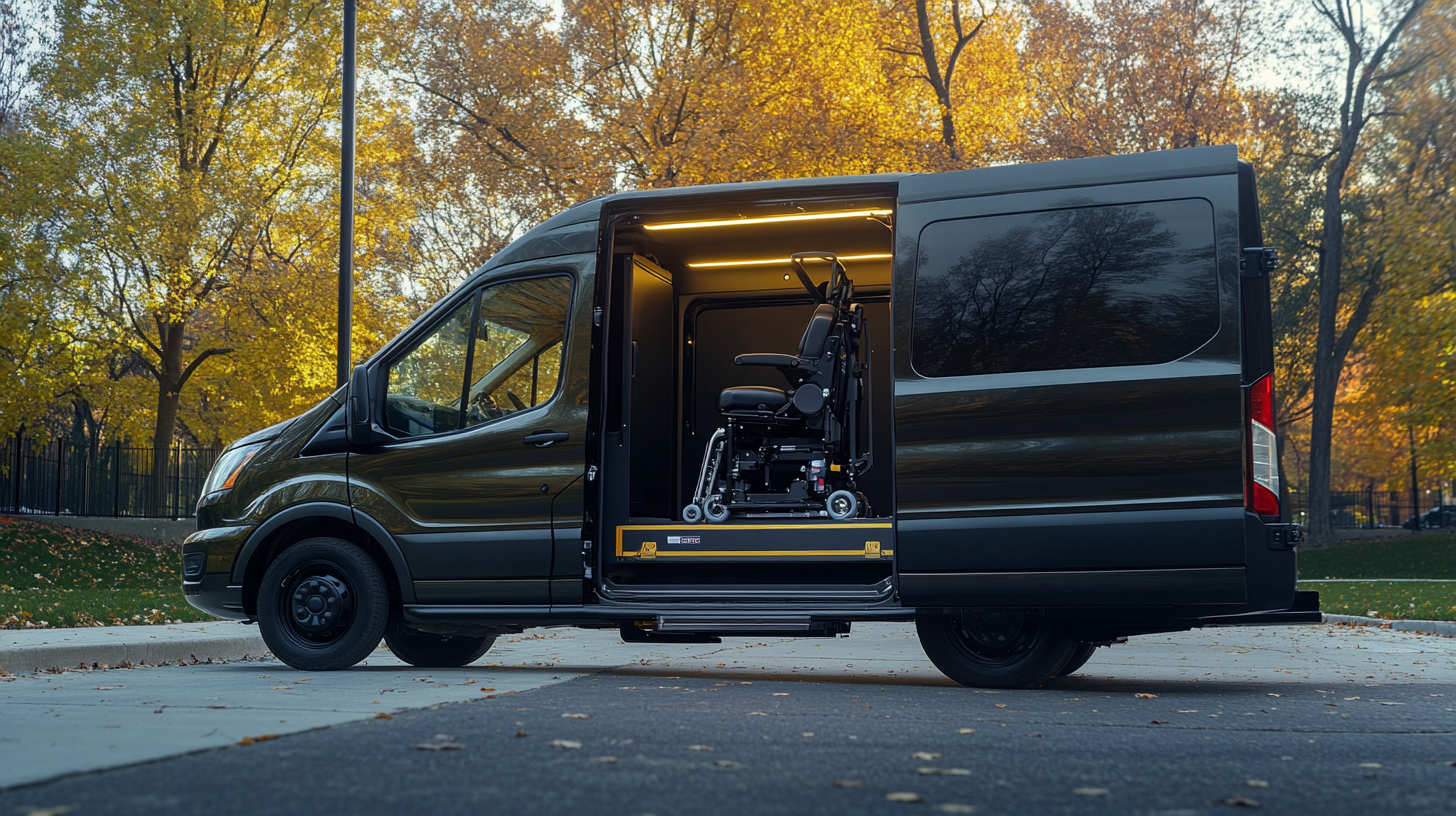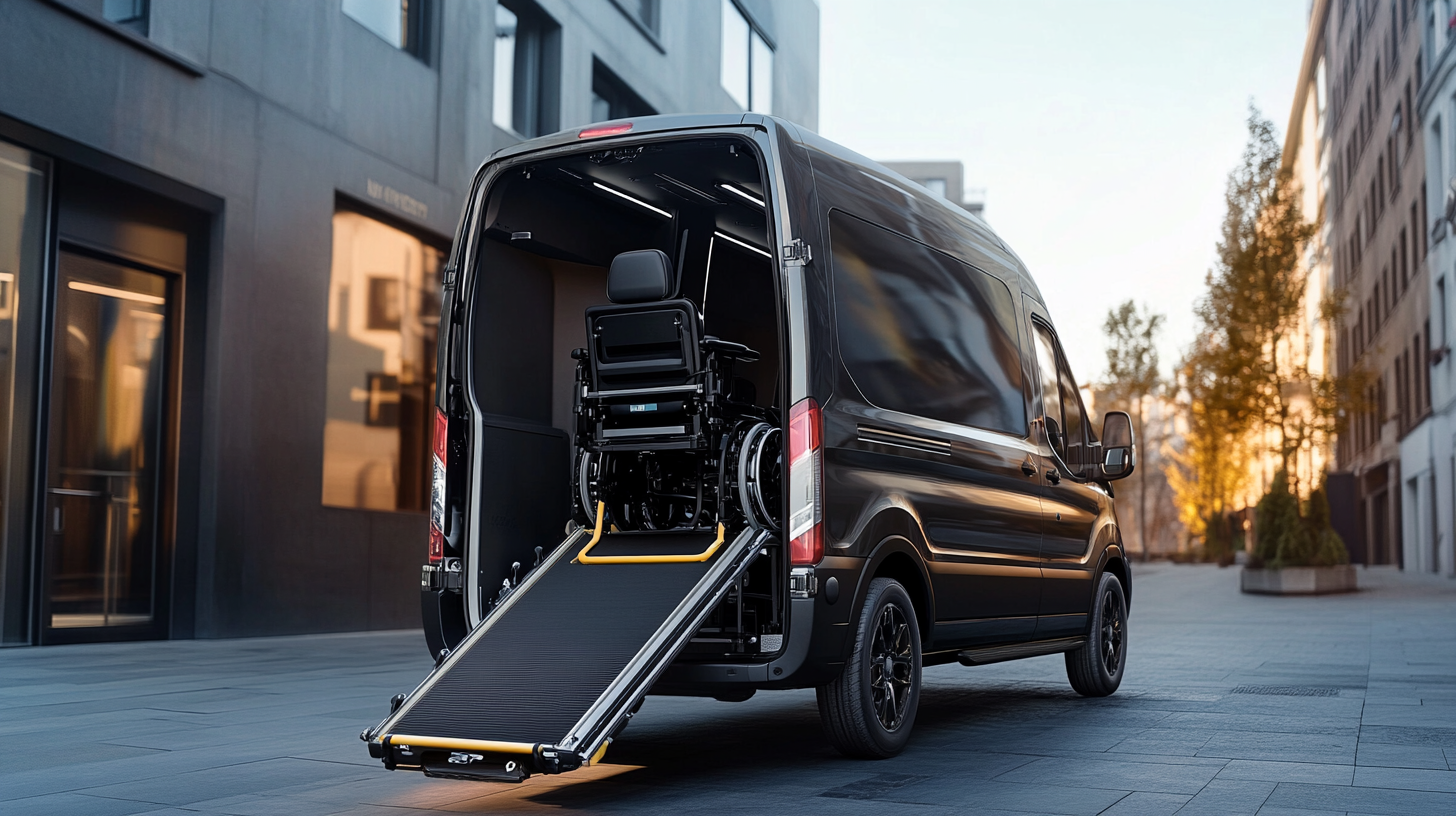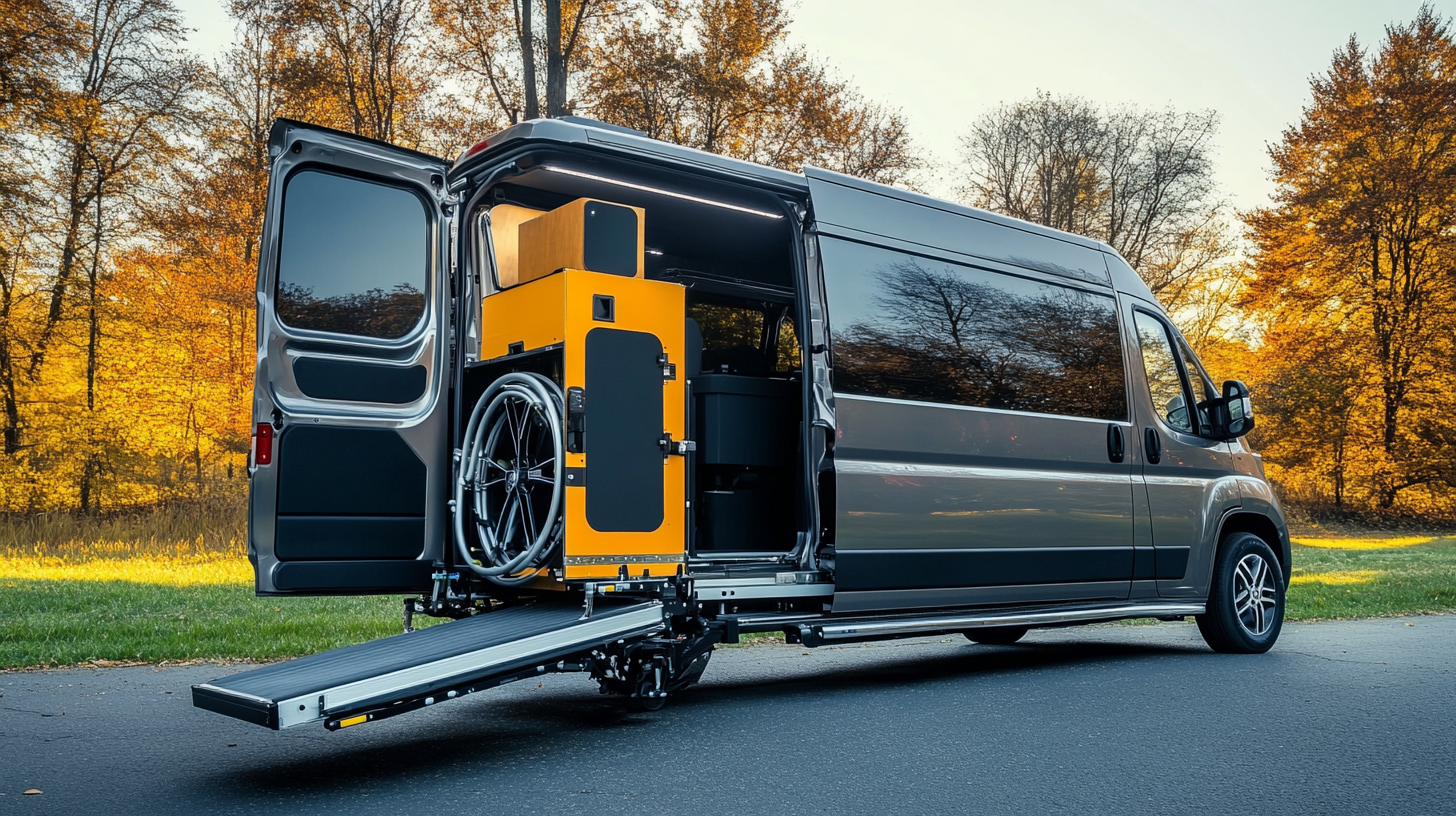Revolutionizing Mobility in 2025 The Complete Blueprint for Sourcing Vans with Wheelchair Lifts
As we look towards the future of mobility in 2025, the need for inclusive transport solutions becomes increasingly critical. One of the most transformative developments in this arena is the van with wheelchair lift, designed to provide access and independence for individuals with mobility challenges. These specialized vehicles are not only about compliance with regulations but also reflect a commitment to fostering a more inclusive society. By revolutionizing the concepts of accessibility and convenience, we are setting new standards for transportation that cater to all.
In this blog, we will outline a comprehensive blueprint for sourcing vans with wheelchair lifts, ensuring that organizations and individuals alike can make informed decisions. From understanding the latest advancements in wheelchair lift technology to exploring the various sourcing options available, this guide aims to equip stakeholders with the knowledge necessary to choose the best solutions for their specific needs. Join us as we delve into the future of mobility and discover how a van with wheelchair lift can transform lives and communities, paving the way for a more accessible world by 2025.

Understanding the Importance of Accessible Transportation for All in 2025
As we approach 2025, the need for accessible transportation is more critical than ever, with reports indicating that over 61 million adults in the U.S. live with some form of disability, representing 26% of the population. Accessible transportation solutions, particularly vans equipped with wheelchair lifts, play a pivotal role in ensuring that everyone can move freely and independently. According to the National Highway Traffic Safety Administration, more than 18% of individuals with disabilities cite transportation as a significant barrier to their mobility, showcasing the urgent need for comprehensive strategies to address this issue.
The demand for accessible vans is projected to rise significantly, with the market for vehicles equipped with wheelchair lifts expected to grow by 16% annually between 2023 and 2028. This growth can be attributed to increasing awareness of accessibility needs and legislative mandates, such as the Americans with Disabilities Act (ADA), which stresses the importance of providing equal transportation opportunities. Additionally, many localities are investing in accessible public transit options as part of their commitment to inclusivity and equality, reflecting a broader societal shift towards accommodating diverse mobility needs.
Furthermore, advancements in vehicle design and technology are making wheelchair-accessible vans more user-friendly and efficient. The integration of smart transportation solutions, such as app-based ride-sharing systems, can further enhance access to mobility for individuals with disabilities. These innovations not only improve safety and convenience but also promote social inclusion, allowing individuals to participate fully in their communities. As we move forward, it is crucial that stakeholders prioritize the importance of accessible transportation, ensuring a future where mobility is a right for all, not just a privilege.

Key Features to Look for in Vans with Wheelchair Lifts
When sourcing vans with wheelchair lifts for 2025, it’s essential to focus on key features that enhance accessibility and comfort. The recent unveiling of the Winnebago Roam, a Class B camper van specifically designed for wheelchair users, highlights the growing commitment to inclusive mobility solutions. When selecting a van, ensure it has ample interior space, easy maneuverability, and storage solutions that cater to the needs of wheelchair users, promoting a cozy and spacious living environment.
Additionally, considering advancements in technology and design, look for vans equipped with user-friendly lift systems that operate smoothly and safely. The combination of a well-designed lift and robust safety features will ensure that passengers can board and alight without hassle. Moreover, continued innovations by companies such as BraunAbility in creating wheelchair-accessible SUVs demonstrate a commitment to expanding mobility options. This means that potential buyers can expect a wider variety of vehicles tailored to specific needs by 2025, emphasizing both accessibility and environmental sustainability.

Essential Sourcing Strategies for Finding the Right Vans
In 2025, sourcing vans equipped with wheelchair lifts is set to become a crucial aspect of enhancing mobility solutions for individuals with disabilities. A key component of this process is the development of effective sourcing strategies that prioritize value over just price. According to a recent report by the National Mobility Equipment Dealers Association (NMEDA), the demand for accessible vehicles is projected to grow steadily, with a potential market increase of 15% annually over the next five years. This underscores the necessity for stakeholders to adopt a value-based pricing approach when procuring these specialized vans.
To successfully navigate the market, organizations must identify and leverage essential sourcing strategies. Research from McKinsey & Company suggests that emphasizing total cost of ownership rather than just upfront costs can lead to better long-term financial outcomes. By evaluating factors such as durability, maintenance requirements, and resale value, buyers can ensure they are making informed purchasing decisions. Furthermore, aligning with manufacturers who prioritize quality enhancements—like improved lift mechanisms and materials—will create a more reliable and safe transport solution for users.
Engaging with industry experts and utilizing comprehensive evaluation frameworks can also streamline the sourcing process. The American National Standards Institute (ANSI) recommends implementing standardized criteria for wheelchair lift vans, which facilitates comparison across options and aligns with buyer needs more effectively. With the right sourcing strategies, organizations can revolutionize mobility in 2025 and beyond, ensuring that quality services are accessible to all individuals who require them.
Evaluating Cost-Effectiveness and Maintenance Plans for Accessible Vans
As we move towards 2025, the demand for accessible transport options continues to rise, necessitating a careful evaluation of cost-effectiveness and maintenance plans for vans equipped with wheelchair lifts. These vehicles play a vital role in enhancing mobility for individuals with disabilities, making it critical to assess both initial investment and long-term operational costs.
Cost-effectiveness begins with understanding the upfront purchase price of accessible vans. While these vehicles may carry a higher price tag due to specialized modifications, budgeting should include potential tax incentives or grants available for organizations prioritizing accessibility. Additionally, exploring various financing options can help ease the initial financial burden. However, the true evaluation lies in ongoing expenses, such as fuel efficiency, insurance, and routine maintenance, which should be compared against traditional vehicles to ensure sustainability in transportation solutions.
Equally important is the development of comprehensive maintenance plans. Accessible vans require regular servicing to ensure the reliability of wheelchair lifts and other unique features. Investing in a dependable maintenance provider can prevent costly repairs down the line and extend the vehicle's lifespan. Organizations should also consider training staff to perform basic inspections and upkeep, fostering an understanding of the specific needs of accessible vans. By prioritizing a holistic approach to both cost and maintenance, service providers can create reliable, efficient, and sustainable mobility options for years to come.
Cost Analysis of Accessible Vans in 2025
Future Innovations in Wheelchair Lift Technology and Mobility Solutions
In 2025, the landscape of mobility solutions will undergo a transformative shift, driven by innovations in wheelchair lift technology that cater to diverse needs. The increasing prevalence of aging populations highlights the urgency for efficient mobility solutions, emphasizing the importance of advanced wheelchair lift systems designed for a variety of settings. As the demand for accessibility grows, the integration of versatile lifting mechanisms into vans and public transport systems will play a crucial role in ensuring that individuals with mobility challenges can navigate their environment effortlessly.
Recent discussions surrounding the importance of stair-climbing devices for the elderly reveal another layer of necessity within this sector. These innovative tools not only assist those with limited mobility but also address the pervasive issue of isolation faced by the aging population. The development of such technologies reflects a broader trend toward creating inclusive environments, where seniors can enjoy independence without being hindered by physical barriers. As we explore future innovations, the focus will likely broaden to include not just wheelchair lifts, but an array of mobility solutions that empower all individuals, regardless of their physical capabilities.
The convergence of technology and inclusivity in mobility solutions presents a compelling blueprint for the future. By sourcing vans equipped with advanced wheelchair lifts and other assistive devices, communities can ensure that every individual has the opportunity to participate in daily life without restrictions. As we look toward 2025, embracing such innovations will be key in creating a world where mobility is truly revolutionized, fostering independence and dignity for everyone.
Revolutionizing Mobility in 2025: Wheelchair Lift Technology Advancements